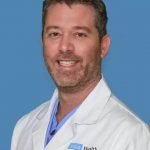Implantable Cardioverter Defibrillators (ICDs)
Implantable cardioverter defibrillators, also known as ICDs, can be compared to pacemakers in that they are both very small (although an ICD is somewhat larger than a typical pacemaker) and they both deliver electrical impulses to the heart. Despite these similarities, their purpose is very different. ICDs, unlike pacemakers, are primarily implanted to deliver a high energy, potentially life-saving shock in the case of ventricular tachycardia or fibrillation (VT or VF). Ventricular arrhythmias are extremely dangerous and represent the most urgent forms of arrhythmia. Patients have a short amount of time to receive treatment, and without treatment Sudden Cardiac Death would result.
In essence, an ICD is the implanted version of the external defibrillators (with chest pads) that one often finds in public places or events.
When Are ICDs Appropriate?
If we determine that the patient is at a higher risk of ventricular tachycardia or fibrillation, we may suggest the implantation of an ICD. Sometimes a catheter based procedure known as an electrophysiology study is necessary to determine risk of sudden cardiac death. ICDs are generally more effective in treating ventricular tachycardias than antiarrhythmic medication. Specific conditions that qualify a candidate for an ICD include:
- Surviving an episode of sudden cardiac arrest
- Structural heart disease that lends itself to an increased risk of sudden cardiac arrest
- Certain forms of recurrent ventricular tachycardia
Not all patients will be candidates for the implantation of an ICD. This may be due to co-occurring health conditions that would jeopardize the effectiveness of the procedure. Further, patients with treatable/curable conditions may not require an ICD.
How is an ICD Implanted?
Much like the implantation of a pacemaker, the procedure is performed under local anesthesia at a hospital. First, the EP will make a small incision in the upper chest, either on the left or right side of the body. Electrical leads will then be implanted in the appropriate tissue of the heart via a vein. The other ends of the leads will be connected to the pulse generator which is, in turn, attached to the chest wall under the skin. The incision is then closed.
ICDs may require one night in the hospital. Patients will be monitored and guided on how to care for their incision as well as to learn more about living with an ICD.
Postoperative considerations
ICDs do not treat the underlying condition that causes ventricular tachycardia or fibrillation, whether it is caused by structural heart defects or not. Rather, it is an effective method to proactively prevent many cases of Sudden Cardiac Death by treating the arrhythmia once it occurs. Further, ICD implantation comes with certain risks, often exacerbated by a patient’s age or general health, including:
- Infection at incision site
- Bleeding
- Failure of the pulse generating device
- Failure of the leads
- Incompatibility with certain activities and devices that create medium or strong electromagnetic fields
- Recall of implanted material such as device or leads
The goal of the ICD is not only to potentially save a patient’s life during an extremely dangerous heart rhythm condition, but also to offer the patient peace of mind, knowing that their first line of defense against sudden cardiac death is a very effective one. However, it is also important to know that these devices are not perfect. In some cases, an ICD may deliver an unnecessary shock, often triggered by something other than an arrhythmia event. Similarly, the ICD’s function may not trigger when necessary, causing an emergent situation. While malfunctions are very rare, and the ICD works normally the vast majority of time, these are important considerations.
We must also stress that when an ICD does deploy its life-saving shock, it is an intense feeling that can cause a great deal of anxiety and fear. The sensation can be likened to being punched in the chest. Patients who are candidates for an ICD will have a significant (up to 50%) chance of receiving a shock within the first year or two of implantation. At times, when necessary, these shocks can occur more than once over a short period of time – should this happen, it would be appropriate to seek emergency medical care. Should the deployment of an ICD shock cause significant psychological effects, patients should contact our office. One purpose of the ICD is to improve quality of life, not detract from it.
Interference
Patients will receive a postoperative set of guidelines for situations to avoid. Certain circumstances can cause the ICD to malfunction and deploy when it is not necessary. This may include such things as contact sports or proximity to devices that generate medium or high levels of electromagnetism.
Battery Replacement
The ICD generates the high-energy pulse via a generator that runs on a battery. This battery has a limited life span, up to approximately 10 years, which can vary based on the device and individual patient. Because of the sealed nature of the battery, replacement requires a follow-up procedure which can be discussed when the battery begins to draw down.
Programming
Programming of the ICD is typically performed in our office and is a simple, quick and painless procedure. We will periodically evaluate the data from the ICD, especially after the deployment of a shock, to see if adjustments need to be made.
Antiarrhythmic Drugs
Patients taking antiarrhythmic drugs for the purpose of suppressing ventricular tachycardia may have an expectation of eliminating the medication regimen after having the ICD implanted. This is not always the case. Antiarrhythmic drugs may actually be useful in the management of ventricular tachycardia in conjunction with the ICD. Depending on the patient’s tolerance for medication, as well as its effectiveness, we may suggest continuing or starting medication.

